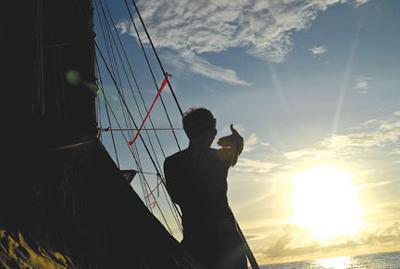What do stargazing and Hawaii have in common? A lot it turns out.
The largest research observatory in the world is located on Mauna Kea, the Big Island of Hawaii. Arrive at the Onizuka Center for International Astronomy Visitor Information Station (VIZ) before dark, so you can enjoy the exhibits and the best sunset on the island. The VIZ is named after the Hawaiʻi born astronaut Ellison Onizuka, who died in the Space Shuttle Challenger disaster in 1986.
Did you know that you can see the stars better at the 9,200 foot VIZ, than you can at the 13,796 foot summit? Your vision at the summit is less acute because of the lack of oxygen there.
Hawaiians are descended from some of the greatest astronomers and navigators who ever lived. As the walls of Troy were falling to the Greeks, Polynesian explorers followed star paths across the world’s greatest ocean to settle one third of Earths’ surface. Ancient Hawaiians had names for hundreds of stars and other astronomical objects and concepts.
Early Polynesians were highly skilled wayfinders who sailed thousands of miles over open ocean without instruments. Navigation was accomplished primarily by a thorough knowledge of the stars and the waves.
More recently these explorations were duplicated by Nainoa Thompson and the crew of the Hokule`a, a Polynesian double-hulled voyaging canoe. Hokule’a is the Hawaiian name for Arcturus, the brightest star in the constellation Boötes (the herdsman). Nainoa started learning astronomy from the children’s book, The Stars, by H. A. Rey, famous for his Curious George series. Consider introducing your children to astronomy with their very own star from Name a Star.
On the first page of The Stars, Rey writes “If you know the stars, you are not easily lost. They tell you the time and direction on land, on sea, and in the air, and this can be valuable on many occasions.” He must have listened to the ancient Polynesians.
If you would like to learn more about the Polynesian art of wayfinding, the building of the Hokule’a, and the epic voyage from Hawaii to Tahiti, read Hawaiki Rising: Hokule’a, Nainoa Thompson, and the Hawaiian Renaissance. Nainoa Thompson was the first Hawaiian to find distant landfall without charts or instruments in a thousand years.



